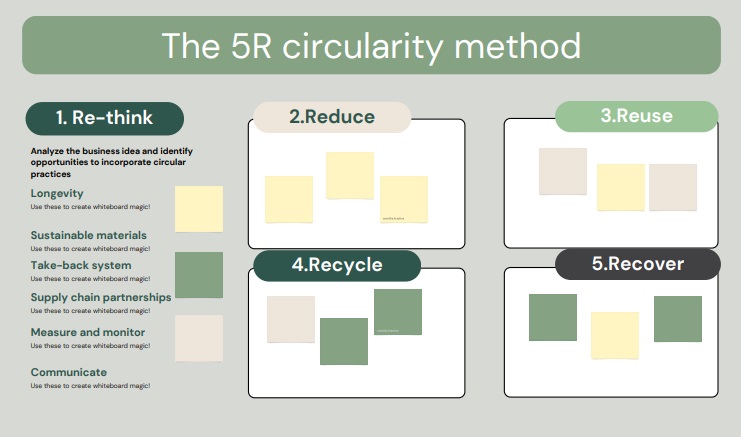Digital Handbook on How to InnovateSustainable Start-Ups and Businesses forClimate Action
Experts from 3 partner Universities – Lapland University of Applied Sciences from Finland, Turiba University from Latvia and FH Aachen University of Applied sciences from Germany – developed a digital handbook for entrepreneurs, as we call it – SECA Guide.
SECA guide aim to bring up the changes in the way of thinking, hopefully resulting in growing number of green businesses sustainable companies, advocates of circular economy and most importantly: activists for climate change action.
This handbook is a methodology, step by step guidance to help entrepreneurs and start-ups to create sustainable and climate action focused business solutions.
In this section of the website, you can familiarize yourself with the Handbook by studying chapter by chapter, watching the supporting video materials attached to the chapters and completing the worksheets. Or you are welcome to download the full version of the Handbook.
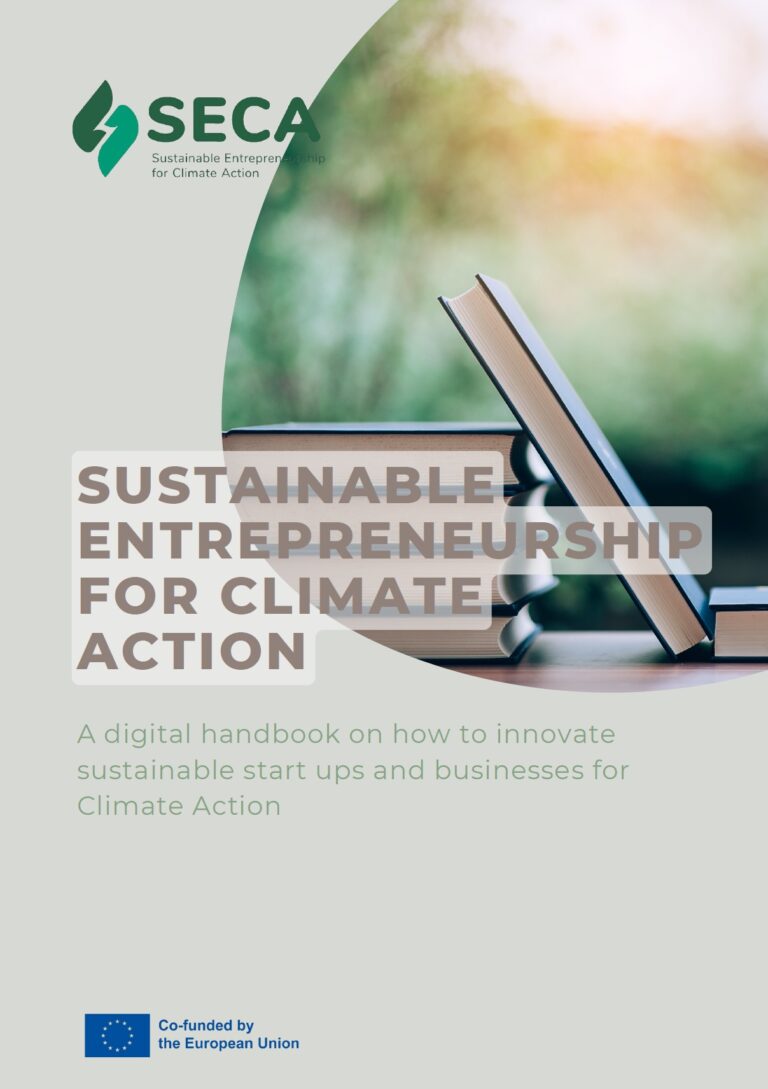
HOW DOES THE HANDBOOK WORK?
First, we establish the foundation of the concepts of Sustainable Development Goals (SDGs) and Climate Action, provide insights into sustainable entrepreneurship, its significance, and their interplay with SDG 13 on Climate Action.
In the next part we offer a clear roadmap for creating Climate Action-focused businesses. We will provide you with a step-bystep plan and practical tools to help you develop start-ups that address challenges related to climate change.
In each part of the innovation journey you will be introduced to the method or tool, with defined learning goals. You will learn the steps of the process and understand what you will achieve at the end of each step. You will also complete small tasks, following instructions, systematically progressing from one step to the next through workbook tasks. Additional reading material, videos, case studies and workbook templates are linked to expand your knowledge.
Watch video about this Handbook
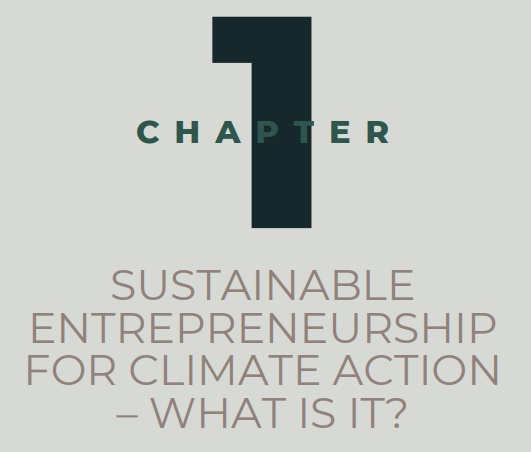
UNDERSTANDING SUSTAINABILITY
The United Nations presents a widely accepted definition of sustainability within the framework of sustainable development. Sustainability is the practice of meeting the needs of the present without compromising the ability of future generations to meet their own needs. It emphasizes the importance of responsible resource use, environmental preservation, and equitable development to ensure a better future for all (UN, 2023).
Sustainability is often broken down into three core parts: economic, environmental, and social. These are also referred to as ESG (Environmental, Social, and Governance). ESG represents the factors used to measure how well a company handles its impact on the environment, treats people fairly, and manages its operations responsibly. In business settings, sustainability frequently strives to safeguard natural or physical resources, ensuring their availability for future generations.
UNDERSTANDING SUSTAINABLE ENTREPRENEURSHIP
In general terms, entrepreneurship means starting and running your own business or project. Entrepreneurship involves the process of 1) identifying opportunities, 2) developing innovative ideas, 3) taking calculated risks to create and manage a new business or venture.
Entrepreneurs often navigate challenges, adapt to changing circumstances, and seek out opportunities for growth.
Sustainable entrepreneurship ensures that a business not only makes a profit but also takes care of people and the planet. Sustainable entrepreneurship is a business model in which the company seeks to create value by addressing social, environmental needs, while sustaining economic gains. Sustainable entrepreneurs focus on creating products and services that have a positive impact on the environment, while also providing economic benefits. Sustainable entrepreneurship is often referred to also as social entrepreneurship.
SUSTAINABLE ENTREPRENEURSHIP - WHY IS IT IMPORTANT?
Sustainable entrepreneurship is crucial today, because it aligns business success with long-term societal and environmental well-being, fostering positive impact. The future belongs to sustainable entrepreneurs – they are the driving force behind innovative solutions that balance economic prosperity, social equity, and environmental leadership. As global challenges like climate change intensify, sustainable entrepreneurs hold the key to creating resilient businesses that contribute positively to society and the environment.

SDG #13 CLIMATE ACTION
SDG #13 Climate Action is a call to take urgent action to combat the climate change and its impact on our planet. In 2015 the United Nations designed 17 Goals as a call to action to end poverty and protect the planet. These Sustainable Development Goals (SDGs) are meant to ensure that by 2030 everyone around the world can enjoy peace and prosperity.
The SDGs place emphasis on climate action because climate change is a real threat to our entire civilization. The effects are already visible and will be catastrophic unless we act now.
THE ROLE OF ENTREPRENEURS IN CLIMATE ACTION
Entrepreneurs play a crucial role in addressing various climate challenges by bringing innovative solutions to the table. For example they can create more efficient ways of producing energy, managing waste, and reducing carbon emissions. They can promote the concept of a circular economy, where products and materials are designed to be reused, repaired, and recycled, minimizing waste and resource consumption. They contribute to the development of green infrastructure, such as sustainable transportation systems or green buildings and many other. Thus we look at the climate action as a source of innovative opportunity to transform the way we set up and run businesses.

WHAT DOES IT MEAN TO ACT FOR CLIMATE?
Climate action refers to the efforts and initiatives taken to address and mitigate the impacts of climate change. It involves a wide range of actions at the individual, community, national, and global levels to reduce greenhouse gas emissions, adapt to changing climate conditions, and promote sustainability.
Climate action includes measures such as transitioning to clean and renewable energy sources, implementing energyefficient technologies, conserving natural resources, protecting ecosystems, and raising awareness about the importance of climate change. Entrepreneurs and start-ups can also be considered a solution to climate change.
CLIMATE ACTION AS A SOURCE FOR INNOVATIVE BUSINESS IDEAS
Climate change is considered a negative phenomenon, but at the same time it can serve as a source for innovation in the business world. There are plenty of opportunities to take action – in renewable energy, energy efficiency, carbon reduction technologies, climate data and analytics, sustainable agriculture, the circular economy, climate adaptation solutions, green finance, clean transportation, and carbon offsetting services, among others.
Businesses that embrace these opportunities can not only contribute to addressing climate change but must also tap into growing markets driven by environmental awareness, making climate action a source of innovation and sustainable business development. Every little effort can have a significant impact!
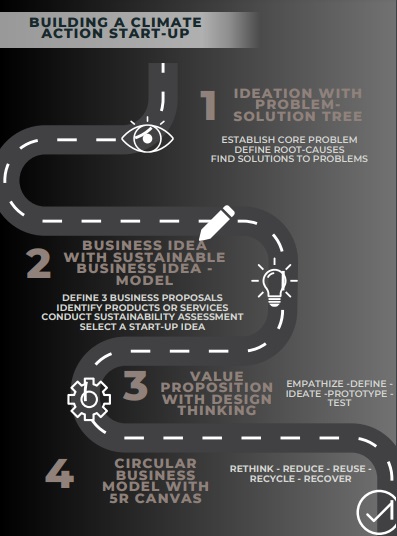
WATCH VIDEO:
Sustainable entrepreneurship and circular economy
Climate Action - Source for Innovation
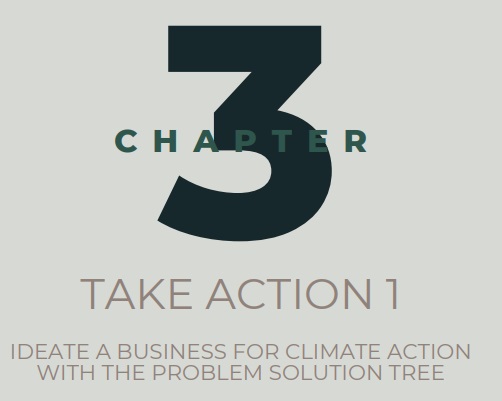
PROBLEM SOLUTION TREE
The Problem Solution Tree (PST) is a tool used in problem-solving and decision-making to identify and analyze potential solutions to a problem. It is a method for solving the Sustainable Development Goals (SDGs) used by the United Nations.
The PST is a visual representation of the problem, with the main problem at the top of the tree and potential solutions branching off of it. The PST is used to break a problem down into smaller, more manageable components, and then to analyze each component to determine the best solution.
The method is based on the principle that problems are caused by underlying factors, and that by understanding these root causes, it is possible to develop effective solutions.
INTRODUCTION TO THE PROCESS
The process of PST method follows ten steps. They include the core problem statement and further analysis of the root causes of the core problem. The core problem is placed in the middle of the worksheet. Five main or primary root causes are then defined using the question “why” – answering why this problem exists.
Once five primary root causes are established, the secondary causes of primary root causes are examined following the same question “why does this particular (primary) cause exist?”.
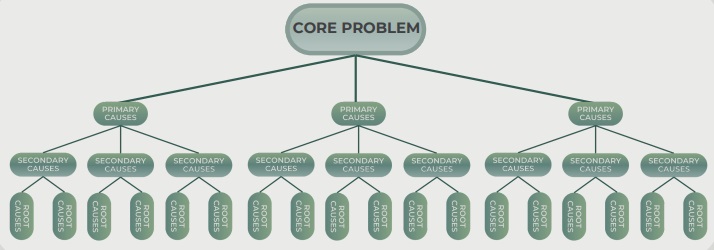
Watch video about Problem Solution tree
Get to know more about Problem Solution tree
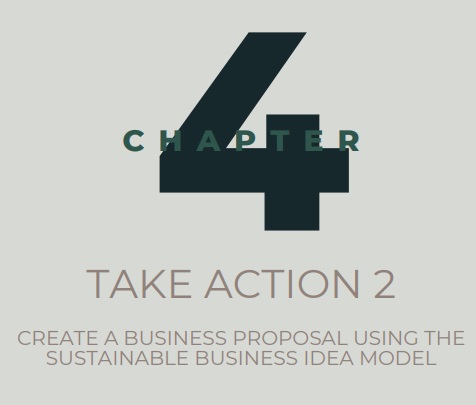
TURNING SOLUTIONS INTO POTENTIAL START-UP BUSINESS IDEA
The Sustainable Business Idea – model (SBI) is a tool that helps develop a business idea with sustainability at its core. Using the problem tree and the solutions chosen by your team, pinpoint potential undertakings or start-up business ideas. What could be the business, based on the solutions created, and what kind of products or services could be offered? Remember that we are focusing on sustainable business development and therefore our ventures follow the Sustainable Business Idea (SBI) – model approach.
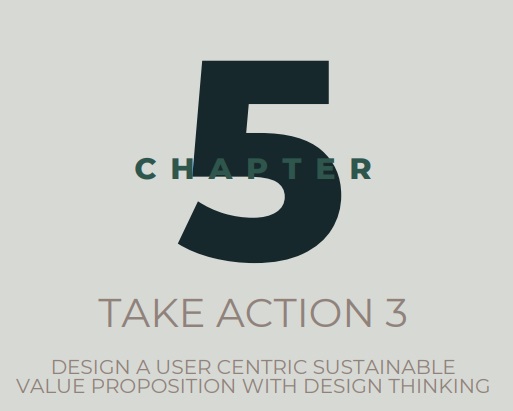
DESIGN THINKING
Design thinking is an iterative method to solve complex problems in a user-centered way. Originally developed for the design industry, the method has since proven itself and is also valued in other areas.
Design thinking is a useful way to generate innovative business ideas and it offers a structured approach to look at problems from new angles and develop creative solutions. It involves working in interdisciplinary teams and weighing up feasibility, cost-effectiveness, and desirability. It entails working in an agile, descriptive way and with enough room for creativity.
In several phases, the process leads you from your previously identified problem to a solution that is feasible and adapted to the needs of the user.
Learning goals – At the end of the process, you have a mature idea that solves a real problem, and you know how to implement it.
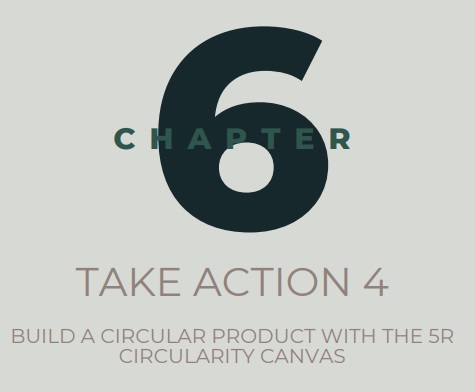
5R CIRCULARITY CANVAS
The 5R circularity or zero waste approach involves adopting principles that prioritize reducing, reusing, recycling, recovering, and re-thinking resources and products within the production and consumption cycle. This strategy aims to minimize waste generation, optimize resource utilization, and create a sustainable, closed-loop system where products are designed for longevity, easy disassembly, and material recovery. Thus the approach minimizes environmental impact and fosters economic resilience by conserving resources and reducing disposal costs.
The 5R circularity canvas is a method that provides a structured framework to ensure that each step of the circular product development process is considered and addressed. It allows easy tracking of progress and encourages a comprehensive approach to sustainability in product development.
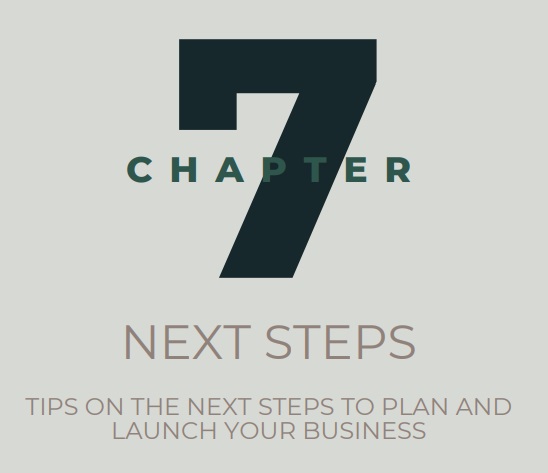
CONSIDER YOUR NEXT STEPS
Congratulations!
You have developed an excellent sustainable business idea! It is not an easy task, but a very important first step towards a successful business. In this part we would like to remind you that business development does not stop just with an idea. Thus your next steps are to develop a business plan and launch the business. There are many good resources to guide you in the development of a business – hereby are some tips for the following steps. Always keep sustainability in mind!
Please help us to improve Handbook and teaching materials. Let us know your feedback, comments and suggestions for improvements. Please fil in short feedback form, we will really appreciate your help!


